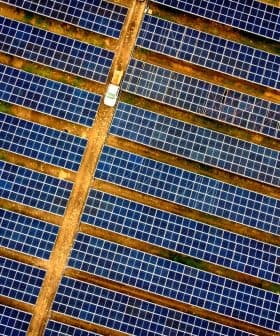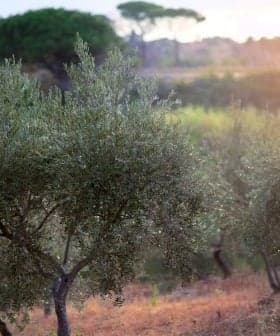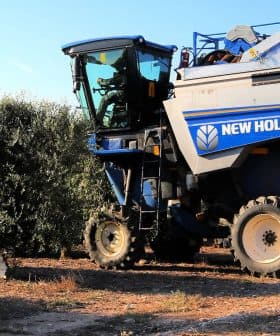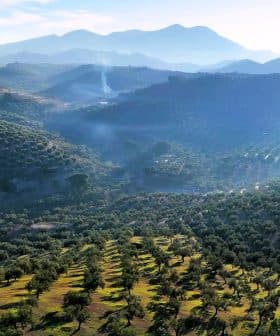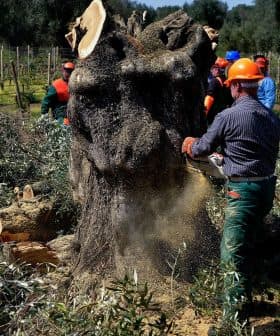Carbon-Capturing Power of Olive Groves Measured

The Spanish C‑Olivar project has shown that 15 olive grove plots in Estepa sequester 412 metric tons of carbon dioxide equivalent per year, with varying management practices affecting carbon storage levels. The project aims to increase carbon sequestration in olive groves by developing methodologies for calculating carbon credits, creating a voluntary carbon credit market, and promoting practices that favor carbon sequestration.
The first results of the Spanish C‑Olivar project have been published, showing that the 15 plots studied achieve a net sequestration of 412 metric tons of carbon dioxide equivalent per annum.
The plots, located in Estepa, Andalusia, comprised 440 hectares of olive groves with varying management practices.
C‑Olivar is an operational group based in Andalusia comprising regional and national government agencies, the University of Jaén, the agricultural professionals’ organization ASAJA-Sevilla, the Estepa Protected Designation of Origin (PDO) regulatory body, and Evenor-Tech, a technology company specializing in land management and environmental protection.
See Also:Global Temperatures Expected to Rise 2ºC by 2030The primary objective of the project is to increase the amount of carbon stored by olive groves. To achieve this, the group is tasked with devising a methodology for calculating carbon credits for olive growers, creating a voluntary carbon credit market for the sector, increasing the adoption of olive cultivation practices that favor carbon sequestration and developing technology to assist farmers and technicians in this endeavor.
The analysis evaluated the carbon stored in the permanent structures of the olive trees and in the soil, revealing sequestration ranges of between 0.6 and 2.6 tons of carbon dioxide equivalent per hectare per annum for trees.
In six of the 15 plots, additional sequestration of 0.36 to 2.1 tons per hectare was observed in the soil, while in the remaining nine plots, a loss of soil carbon was recorded.
In those plots for which a soil carbon loss was reported, differences in management practices were primarily deemed responsible. These included sparse or absent ground cover and the lack of organic soil conditioning techniques.
Previous research has shown that traditionally managed olive groves store significantly more carbon, and that both ground cover and organic soil conditioning are major contributing factors.
“The application of organic fertilizers and facilitating temporary spontaneous cover crops achieve a positive carbon balance and reduce the negative impacts of olive cultivation,” said Lázuli Fernández from the University of Jaén.
“[Traditional olive groves] allow 5.5 kilograms of carbon dioxide equivalent to be removed from the atmosphere for each kilogram of [unpackaged] oil produced,” she added. “In the case of irrigated cultivation, this value drops to 4.3, and the intensive method allows capturing up to 2.7 kilograms of carbon dioxide equivalent for one kilogram of oil.”
In five of the nine plots for which a soil carbon loss was reported, the carbon accumulated in the trees balanced the loss from the soil. In the remaining four, a net carbon emission was recorded. This again was attributed to management practices.
There are approximately 11.7 million hectares of land dedicated to olive cultivation worldwide, an area roughly equivalent to the size of Portugal.
If the results from the C‑Olivar analysis were found to be representative, including those plots with a net emission, this would equate to approximately 10.96 million tons of carbon dioxide equivalent sequestered per annum.
In their press release, however, the Seville chapter of the Association of Young Farmers and Ranchers (ASAJA-Sevilla) emphasized the need to improve farming practices to increase carbon sequestration, a key project goal.
If the highest figures from the plots in the study area were replicated, this would raise the global olive grove carbon storage to approximately 55 million tons per year.
“From the Estepa PDO, we continue to work steadfastly to obtain rigorous data that highlight the essential role played by our olive groves as a carbon sink and their ability to mitigate the effects of climate change,” said Moisés Caballero, secretary-general of the Estepa PDO.
“This research is another example of the environmental potential of olive cultivation and encourages us to continue our commitment to a sustainable agricultural model that is committed to the future of the planet,” he concluded.



